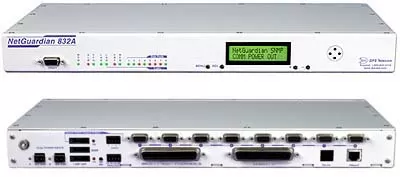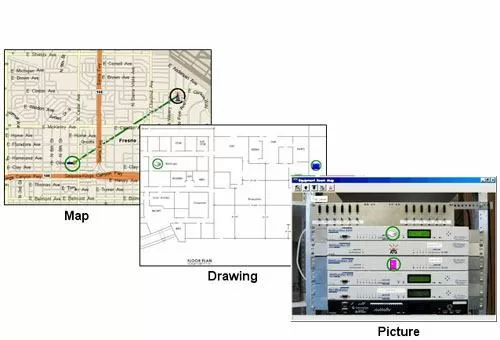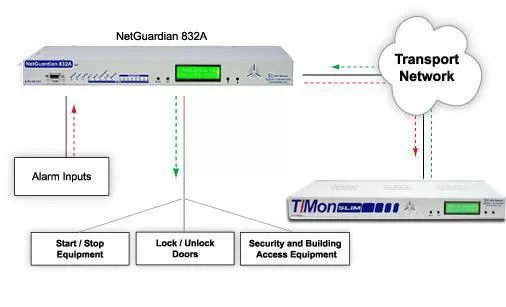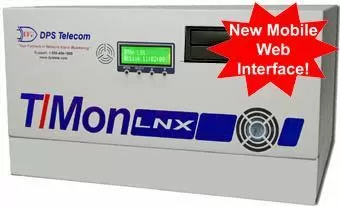Check out our White Paper Series!
A complete library of helpful advice and survival guides for every aspect of system monitoring and control.
1-800-693-0351
Have a specific question? Ask our team of expert engineers and get a specific answer!
Sign up for the next DPS Factory Training!

Whether you're new to our equipment or you've used it for years, DPS factory training is the best way to get more from your monitoring.
Reserve Your Seat TodayYou've decided that it's time for better remote monitoring visibility of your sites. You're doing research about the best SNMP managers, the capacity requirements of the site you're monitoring, comparing free vs. paid, and trying to get an understanding of the perfect-fit setup for your sites. However, the question that's always in the back of your mind - and in the mind of your boss - is: how much will an SNMP manager cost?
Are you currently monitoring only a few sites? Then you might not need an SNMP manager at all. A good option for you may be an RTU like a NetGuardian 832A (although this certainly isn't the only option out there). This unit, as an example, provides autonomous local alarm monitoring, which allows you to monitor alarms directly from the RTU.
The NetGuardian 832A also has a built-in web browser interface, so you can view alarms and operate control relays from any computer on your LAN - and no master station is required. This RTU can send alerts directly to your phone or email, which gives you 24/7 alarm notifications.
Depending on the number of remote sites you're working with, an SNMP manager may not be the best solution for you. A small network of NetGuardian 832A units can provide the alarm presentation and/or notifications that you need for better monitoring visibility. Also, critically, those RTUs support SNMP so you can add an SNMP manager later.
However, if you have a growing network, you should continue on with your plans to upgrade to install an alarm master.
When you have more than ten sites, keeping up with all your alarms on separate web browsers will get cumbersome. At this point, it's time to start looking into buying an SNMP manager.

As I said, the more your network grows, monitoring each RTU individually becomes a disadvantage. Imagine how hard it would be - as you install more RTUs - to track alarms across multiple web interface windows, and how confusing it'd be for your techs to receive multiple alarm notifications from various devices across your entire network.
What if someone's email address or phone number changes? You'd have to change it in every RTU.
Preventing confusion and increasing network maintenance efficiency are just a couple of reasons why you'd want to deploy an SNMP manager. An SNMP manager consolidates alarm monitoring and helps coordinate maintenance efforts across the network.
Some other benefits of an alarm master involve proactively monitoring your network, then intelligently dispatching technicians with the right tools, to the right place, at the right time, avoiding unnecessary or wasteful windshield time.
Putting a proactive monitoring system in place is one of the best ways to manage network expenses and allows you to get more done with less.
By now you've probably looked at many options for SNMP managers, and you most likely got a bit excited about the idea of a free master. Don't commit to anything just yet. Before you make a decision about your SNMP monitoring system, you have to ensure that it supports vital telemetry functions. You need a list that can tell you what you need, and more importantly, what free SNMP software is not going to provide you.
Free SNMP managers don't include these 8 critical features:
Complete and accurate alarm descriptions
A free SNMP manager might not keep a record of location, time, severity, and description of alarm events. To adapt an off-the-shelf SNMP manager to monitor these thing, you'll have to create and maintain a master alarm list representing all of the monitored points on your network - as well as create and maintain a database associating all of the Traps that may be sent to the master station with that list.
Identify cleared alarms
Even more work is necessary to identify whether an SNMP Trap represents an alarm or a clear condition. Creating this addition to the Trap association database often requires analyzing multiple variable bindings within the Trap packet. Free SNMP managers often won't do this for you.
Maintain a history of standing alarms
Keep in mind that free SNMP managers most likely will not maintain a list of standing alarms. Instead, it maintains an event log of newly reported Traps and a history log of acknowledged Traps. As soon as a Trap is recognized, it's considered "cleared".
Imagine what might happen to your network if a system operator acknowledges an alarm, but then - for whatever reason - fails to correct the condition. Who would know the alarm is still standing? Make sure that your SNMP manager gives you valuable and detailed "standing alarm" lists so that nothing is neglected.
Sort or filter alarms
If you go with a free SNMP manager, you'll miss out on built-in functions for organizing alarms by logical category, posting the same alarm to multiple logical categories, or sorting which alarms the user wants to see. Look for an SNMP manager that allows you to filter nuisance alarms and has other alarm-sorting capabilities.
Graphical alarm display on geographic maps and photos
Most free alarm masters don't come with graphical alarm display capabilities that provide you with more visibility over your whole network in a clear and logical way. Simultaneously displaying all of your remote sites and equipment on an intuitive graphical interface is much more advanced than basic text alarm displays, which are also sometimes limited to one remote site at a time.

Identify system operators
If a system operator neglects an alarm, it'd be impossible to determine who had made the mistake or to assign responsibility for the resulting issues. This is because free SNMP managers don't record the identity of the system operator who acknowledges an alarm (if they even support multiple users in the first place). When looking for a master, go with one that allows you to track which tech made each change with detailed logging. This makes accountability for mistakes much easier to manage.
Security for multiple users
Don't expect multi-user security on free SNMP managers. All Traps are posted to one alarm list; all users may view all alarms, and all users may recognize all alarms. This assumes, of course, that these masters support multiple users in the first place. I'm sure you don't want just anyone to be able to see your alarms, so look for a manager that allows you to configure varying security levels for different users.
Monitor your whole network
What about your switches, environmental alarms, and legacy gear? If you're like most companies, then SNMP affects only a part of your network. A good alarm master must be able to monitor SNMP as well as all of your other vital protocols your gear uses. Why use multiple systems for monitoring gear that uses different protocols, when you can use one system with multi-protocol capability to keep track of everything?
I know that free SNMP managers sound like a bargain. However, they can end up costing you more in network downtime, windshield time, and ultimately lost costumers than purchasing a reliable monitoring system initially. Your operation is big and important, so don't pinch pennies when you're protecting it with remote monitoring.
Don't risk leaving your operation protected by only the capabilities of a free SNMP manager.
SNMP managers will vary widely in terms of price and functionality, and that's because there's many different types of SNMP managers in the market. They can range from heavy-duty ones, medium-capacity, to small-capacity.
Knowing which one is right for your network can be tricky, but being able to identify the most important factors in order to make a decision is key - especially because these factors will directly affect the price of your SNMP manager.
The key questions to ask yourself are:
If you have a relatively small network, a small or medium SNMP manager is a great upgrade choice for you.

You might be asking yourself, should I really move up to an SNMP manager?
If you have a large network, with a large SNMP manager you can collect up to 1 million discrete alarm points from any number of remote sites and devices. You should move up to large master station if you:
These heavy-duty SNMP managers will also usually have legacy capabilities, meaning they can work with legacy transports and equipment in modern networks. The reality of most evolved networks is that it has all sorts of different gear installed - old and new. These masters are at the top of the industry price range, but these products can be totally customized for you. Your vendor should be able to design and build it to meet your exact specifications. Expect nothing less than top-quality components, excellent manufacturing, and future guarantees.
With SNMP managers, the cheapest products may not be the best ones in terms of quality.
I'm sure your network's reliability is critical for you, so - of course - you should choose a proven, real-world solution.
The T/Mon LNX is a perfect example of a multi-protocol, multi-function network alarm manager designed as a single-platform solution for all alarm monitoring applications. It collects alarm data from multiple different equipment types from many manufacturers and protocols, such as SNMP v1, v2c and v3.
Some other benefits of the T/Mon include:

You might have noticed that I didn't talk about actual numbers when it comes to the price of SNMP managers. That's simply because the exact price of your alarm master will really depend on your individual needs.
Tell an expert what you're trying to accomplish and the best vendors will come up with a customized solution for you.
Contact me for a free network consultation and you'll get an exact price for your perfect-fit SNMP manager. With any sales proposal, we'll always include:

A DPS sales proposal will help you make sure that the SNMP manager you buy is the perfect match for your unique scenario.
Use the online HTML Editor to compose the content for your website easily.

Andrew Erickson
Andrew Erickson is an Application Engineer at DPS Telecom, a manufacturer of semi-custom remote alarm monitoring systems based in Fresno, California. Andrew brings more than 18 years of experience building site monitoring solutions, developing intuitive user interfaces and documentation, and opt...